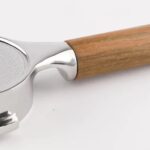Coffee is one of the most popular beverages in the world, and it all starts with the bean. Coffee beans are the seeds of the coffee plant and are grown all over the world. They come in a variety of types, each with its unique flavor profile. In this article, we’ll take a closer look at different types of coffee beans, their flavor profiles, and the regions in which they are grown.
Arabica Beans vs. Robusta Beans. What’s the Difference?
The two most commonly grown types of coffee beans are Arabica and Robusta. Arabica beans are considered to be of higher quality, and they are typically more expensive than Robusta beans.
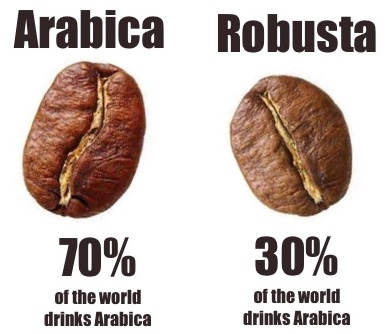
Arabica beans are grown at higher elevations, which contributes to their more nuanced flavors.
Robusta beans, on the other hand, are grown at lower elevations and are more hardy, which makes them easier to cultivate. They also have a higher caffeine content and are often used in blends to add a bit of a kick.
According to the International Coffee Organization (ICO), as of 2020, Arabica coffee accounted for approximately 60% of global coffee production, while Robusta coffee accounted for the remaining 40%.
In terms of consumption, the data is a bit more mixed. In some regions, such as North America and Western Europe, Arabica coffee is generally the more popular choice, while in other regions, such as Asia and parts of Eastern Europe, Robusta coffee is more commonly consumed. In some countries, such as Italy, espresso blends that include a significant percentage of Robusta coffee are preferred.
It’s also worth noting that coffee consumption trends can vary significantly depending on a wide range of factors, including culture, demographics, and economic factors. As such, while Arabica and Robusta coffee may have different levels of popularity in different regions, the overall picture is complex and constantly evolving.
Robusta coffee is primarily grown in countries in Central and West Africa, as well as Southeast Asia. Vietnam is the largest producer of Robusta coffee, accounting for about 40% of the global production.
Other significant producers of Robusta coffee include Brazil, Indonesia, India, and Uganda. Robusta coffee is generally considered to be of lower quality than Arabica coffee and is often used in blends to provide a stronger flavor and higher caffeine content. However, some specialty Robusta coffees, such as those produced in India or Vietnam, have gained recognition for their unique flavor profiles and are becoming more popular among coffee enthusiasts.
Acidity Levels
Arabica coffee is generally less acidic than Robusta coffee. Arabica coffee beans tend to have a smoother, more delicate flavor profile, with a lower acidity and a higher sugar content, which results in a sweeter, more balanced cup of coffee.
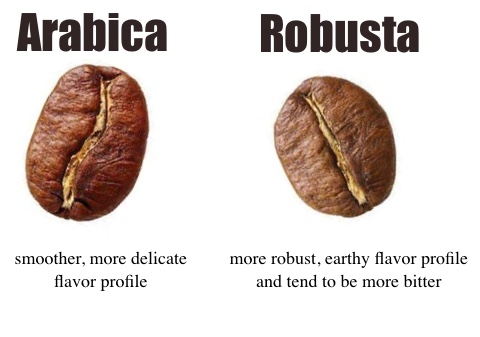
Robusta coffee beans, on the other hand, have a more robust, earthy flavor profile and tend to be more bitter and acidic. This higher acidity can be desirable in certain types of coffee, such as espresso, as it helps to cut through the milk and create a more pronounced flavor.
However, the higher acidity of Robusta coffee can also make it less appealing to some coffee drinkers who prefer a milder, less acidic cup of coffee.
Regions and Flavor Profiles
Coffee beans are grown in regions all over the world, and the region in which they are grown can have a significant impact on their flavor profile. Here are some of the most common regions in which coffee beans are grown and the flavor profiles associated with them.
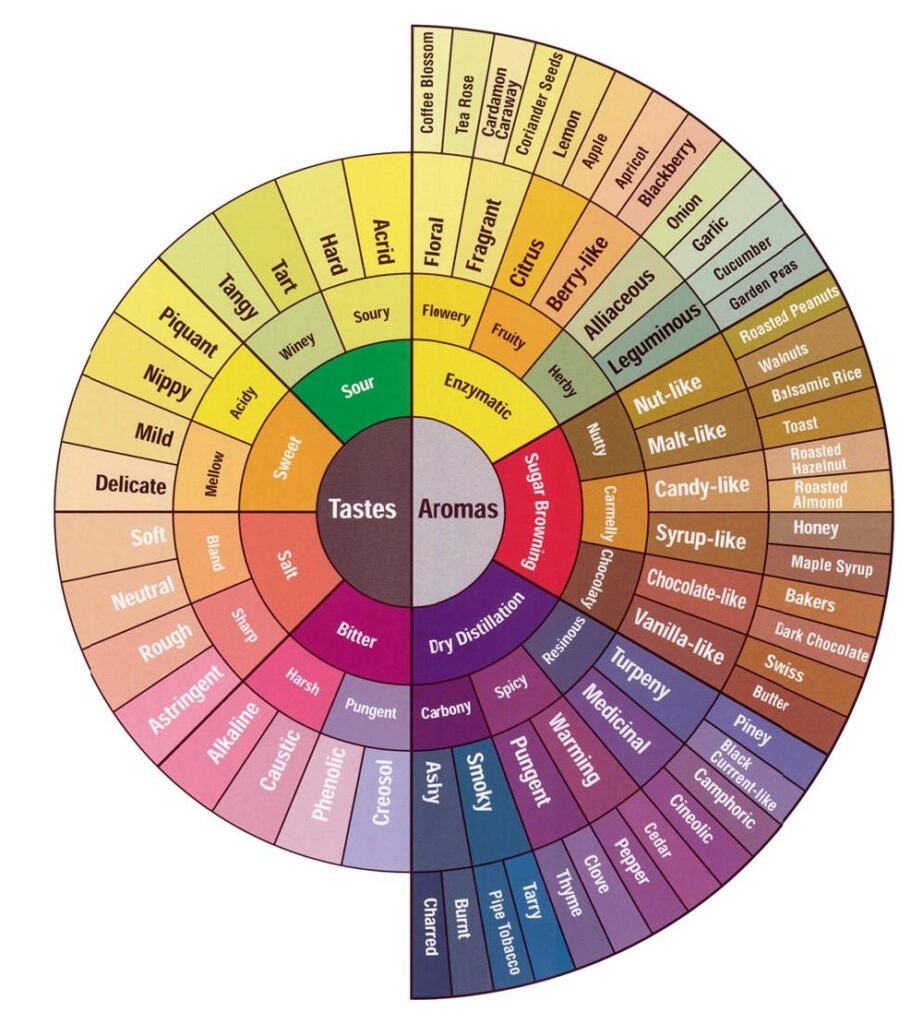
Africa
Coffee has been grown in Africa for centuries, and it is home to some of the world’s most distinctive and unique coffee flavors. Ethiopian coffee, in particular, is considered to be some of the best in the world. Coffees from Africa tend to be more complex and have a wider range of flavors, including floral and citrus notes. Kenyan coffee, for example, is known for its bright acidity and berry-like flavors.
- Burundi
- Congo
- Ethiopia
- Kenya
- Rwanda
- Tanzania
Asia
Coffee is also grown in several countries in Asia, including Indonesia and Vietnam. Asian coffees tend to be more earthy and spicy than coffees from other regions. Sumatran coffee, for example, has notes of tobacco and cedar, while Vietnamese coffee is often used in blends and has a more robust flavor.
- Indonesia
- Papua New Guinea
- Yemen
Central and South America
Central and South America are home to some of the most well-known coffee growing regions in the world, including Colombia, Brazil, and Costa Rica. Coffees from this region tend to be well-balanced and have a medium body. They often have notes of chocolate, nuts, and caramel. Colombian coffee, in particular, is known for its bright acidity and fruity notes.
Central America
- Costa Rica
- El Salvador
- Guatemala
- Honduras
- Jamaica
- Nicaragua
- Panama
South America
- Bolivia
- Brazil
- Columbia
- Ecuador
- Peru
Europe
While Europe is not a major coffee-growing region, some coffee is indeed grown there. Italy, for example, is famous for its espresso and has a thriving coffee culture, but it does not grow its own coffee beans. Instead, Italy imports coffee beans from Brazil, Colombia, and Ethiopia.
Spain also has a small coffee industry, with beans grown in the Canary Islands and on the Spanish mainland. The beans grown in Spain are typical of the Arabica variety and have a mild, fruity flavor profile.
In general, the climate and growing conditions in Europe are not well-suited for coffee cultivation, and so the vast majority of coffee consumed in Europe is imported from other parts of the world. However, European countries have played an important role in the history and culture of coffee, and many European cities are known for their coffeehouses and vibrant coffee cultures.
North America
Hawaii is known for producing Kona coffee, which is a type of Arabica coffee. It has a mild flavor with hints of sweetness and is highly sought after.
Mexican coffee is also predominantly Arabica and is known for its balance of sweetness and acidity. Mexican coffee is often used in blends and is known for its versatility.
- Hawaii
- Mexico
Coffee Growing Seasons
Coffee is typically an annual crop, although some producing countries like Colombia and Sumatra can have two harvests per year. However, most countries have a single harvest season that lasts for several months when coffee cherries ripen and can be harvested. It’s important to note that this information is approximate and can vary from year to year due to weather and climate changes. In addition, recent changes in the climate is causing the coffee production timetable to shift in many origins, leading to further uncertainty in the industry’s future.
The coffee growing season varies depending on the region where the coffee is grown. Generally, coffee plants flower in the spring and summer, and the coffee cherries (the fruit that contains the coffee beans) ripen in the fall and winter. In some regions, there may be two distinct harvest seasons in a year, while in others there may only be one.
In Central and South America, the main coffee harvest season is typically from September to December, while in East Africa, the main harvest season is from April to July. In Indonesia, the harvest season can vary depending on the region, with some areas having two harvest seasons in a year.
It’s worth noting that weather patterns and other factors can affect the timing and quality of the coffee harvest. For example, excessive rainfall or drought can impact the quality and yield of coffee crops. Coffee farmers also need to be vigilant about pests and diseases that can affect their crops.
Overall, the timing of the coffee growing season can significantly impact the quality and availability of coffee beans. Understanding the growing season for different regions can help coffee lovers make more informed choices when it comes to buying and brewing their favorite coffee.
Harvesting
Coffee is typically harvested by hand, with workers selectively picking only the ripest cherries from the trees. This is known as selective picking, and it can be a very labor-intensive process. In some cases, machines are used to strip the cherries from the trees all at once, but this can result in a lower-quality harvest with a higher proportion of unripe or overripe cherries.
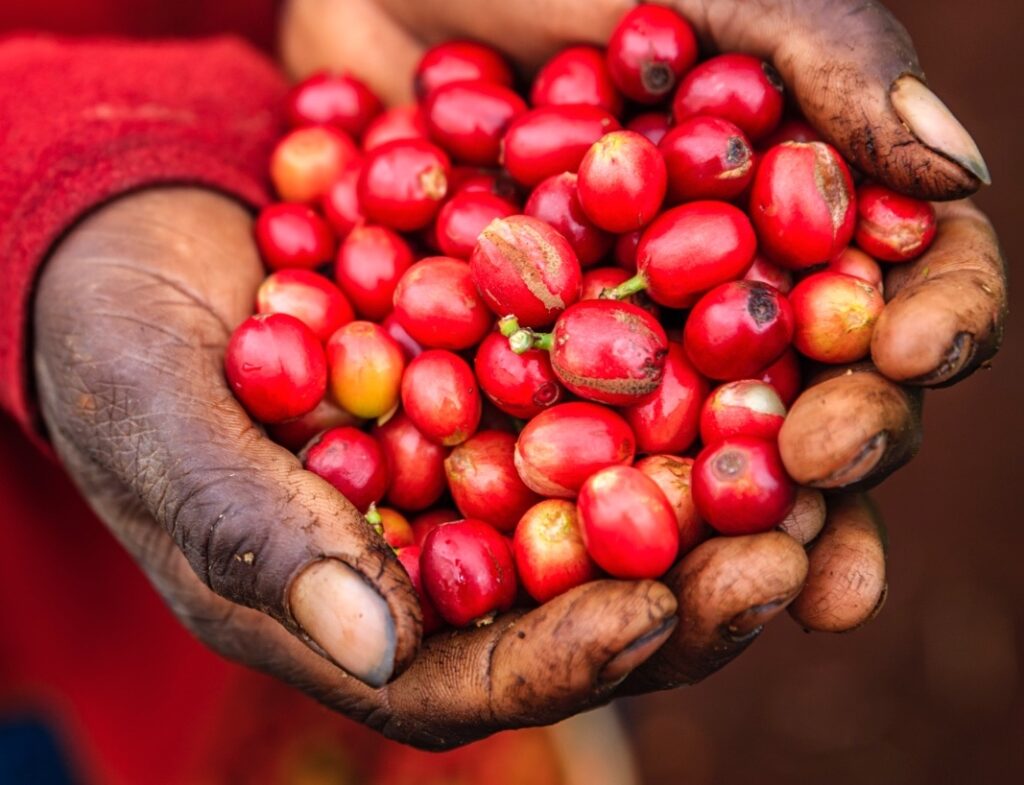
After the cherries are harvested, they are usually sorted to remove any debris or damaged cherries, and then processed to remove the outer layers and reveal the coffee beans inside. The specific processing method can vary depending on the region and the desired flavor profile.
Storage
Once coffee has been harvested, it is important to store it properly to maintain its quality. Green coffee beans can be stored for several months to a year or more, depending on the conditions. Ideally, green coffee should be stored in a cool, dry place with a consistent temperature and humidity level.
However, the length of time that coffee can be stored depends on several factors, including the type of coffee, the processing method, and the storage conditions. Some high-quality Arabica coffees may start to lose their flavor and aroma within a few months of harvesting, while Robusta coffees may be able to be stored for longer periods of time.
It is generally recommended that green coffee beans be used within six months to a year of harvesting to ensure the best possible flavor and quality. Once coffee has been roasted, it should be consumed within a few weeks to a month to enjoy its full flavor profile. However, coffee can still be consumed after this time frame, but it may not taste as fresh or flavorful.
Shipping Times
The time it takes for coffee to reach its destination depends on the harvest time, export period, and ocean voyage duration. While El Salvador’s coffee reputation was once poor due to unstable politics, it can be exported to the US in just 2 weeks. However, Congo or Rwanda coffee may take up to 2 months to arrive.
The Makeup of Coffee
The coffee bean is actually a seed that is found inside the fruit of the coffee plant, known as a coffee cherry. The coffee cherry is a small, fleshy fruit that typically takes about 9 months to ripen. Once the cherry is ripe, it is harvested, and the coffee beans are extracted from the fruit through a process called “milling.”
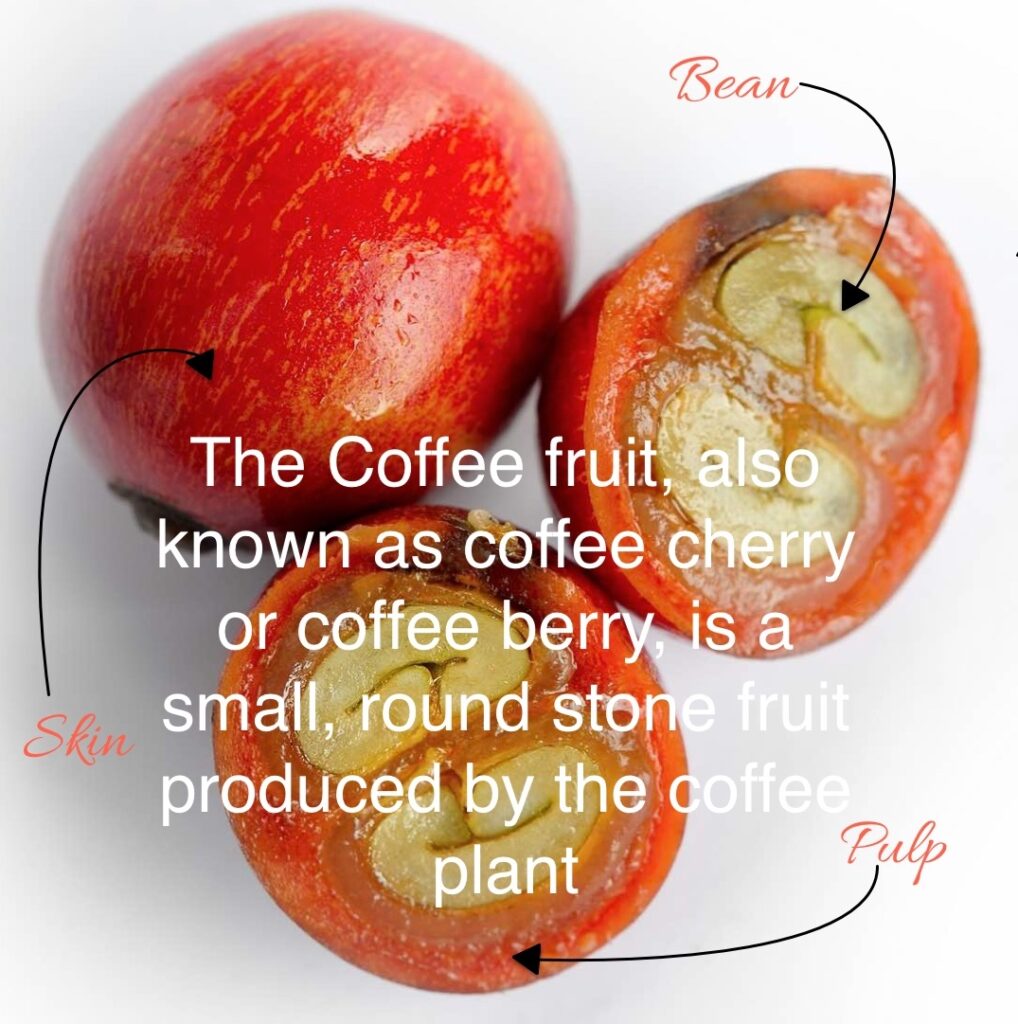
The coffee cherry itself is edible and has a sweet, tart flavor. However, it is not typically consumed in its whole form, as it is relatively small and contains a large pit (i.e., the coffee bean) in the center. Some coffee farmers and enthusiasts do experiment with using the fruit of the coffee plant in different ways, such as by fermenting or drying the fruit to make a tea-like drink.
Overall, the coffee plant is an interesting and complex organism, and the coffee bean is just one part of the larger picture. By understanding more about the coffee plant and the fruit from which the beans are derived, coffee lovers can gain a deeper appreciation for the complexity and diversity of coffee flavors and aromas.
A coffee bean has two main parts: the outer layer, known as the “cherry,” and the inner seed, which is what we know as the coffee bean. The cherry is a fruit that grows on the coffee plant, and it is typically red or yellow in color when ripe. The coffee bean itself is a small, hard seed that is located inside the cherry.
The coffee bean has several distinct parts of its own, including the outer silverskin, which is a thin layer that covers the bean and is typically removed during the roasting process. Underneath the silverskin is the parchment layer, which is a thin, papery covering that is also removed during roasting.
The two main parts of the coffee bean are the endosperm and the embryo. The endosperm is the bulk of the coffee bean, and it contains most of the bean’s flavor compounds and other important characteristics. The embryo is a small, white nub at the base of the bean that contains the genetic material for the coffee plant.
Roasting can also affect the composition of the coffee bean. During the roasting process, the coffee bean undergoes a complex series of chemical reactions that transform its flavor and aroma. The roasting process can also affect the structure of the bean, making it more porous and brittle, which can affect how it behaves during brewing.
FAQs
What is the best type of coffee bean?
The best type of coffee bean is subjective and depends on individual taste preferences. However, Arabica beans are generally considered to be of higher quality.
What is the difference between Arabica and Robusta coffee?
Arabica coffee beans are considered to be of higher quality and have a more nuanced flavor profile. Robusta beans, on the other hand, have a higher caffeine content and are often used in blends to add a bit of a kick.
Arabica coffee is generally considered to be the more desirable and higher-quality of the two main coffee types, including Robusta. Arabica coffee is typically grown at higher altitudes and in cooler climates, which contributes to its milder, more nuanced flavor profile. Arabica coffee beans also tend to have lower acidity and a higher sugar content, which can result in a sweeter, more balanced cup of coffee.
Robusta coffee, on the other hand, is typically grown at lower altitudes and in warmer, more humid climates. Robusta coffee beans have a higher caffeine content and a more bitter, earthy flavor profile. While Robusta is generally considered to be of lower quality than Arabica, it is often used in blends and is an important component of many types of espresso.
Despite the relative quality differences between Arabica and Robusta coffee, both types are widely consumed around the world. In some regions, such as Italy, espresso blends that include a significant percentage of Robusta coffee are preferred, while in other regions, such as North America, Arabica is generally the more popular choice. Ultimately, the choice between Arabica and Robusta coffee comes down to personal taste and preference.
What region produces the best coffee?
The region that produces the best coffee is subjective and depends on individual taste preferences. However, some of the most well-known coffee growing regions in the world include Central and South America, Africa, and Asia.
What factors affect the flavor of coffee beans?
The flavor of coffee beans is affected by several factors, including the region in which they are grown, the altitude at which they are grown, and the processing method used.
Should I buy whole bean or ground coffee?
It is generally recommended to buy whole bean coffee and grind it yourself for the freshest and most flavorful cup of coffee. However, pre-ground coffee can be a convenient option for those who do not have a grinder or who are short on time.
How should I store my coffee beans?
Coffee beans should be stored in an airtight container in a cool, dry place. Avoid storing coffee beans in the refrigerator or freezer, as moisture and odors can seep into the beans and affect their flavor. It’s also important to use your coffee beans within a few weeks of roasting for the freshest flavor.
What is the difference between light, medium, and dark roast coffee?
Light roast coffee is roasted for a shorter period of time and has a lighter color and more acidic, fruity flavor profile. Medium roast coffee is roasted for a bit longer and has a more balanced flavor profile with notes of chocolate and caramel. Dark roast coffee is roasted for the longest period of time and has a dark color and bold, smoky flavor profile.
Can I roast my own coffee beans at home?
Yes, it is possible to roast your own coffee beans at home using a popcorn maker or a dedicated coffee roaster. However, roasting coffee beans can be a bit of an art, and it takes some practice to get it just right.




